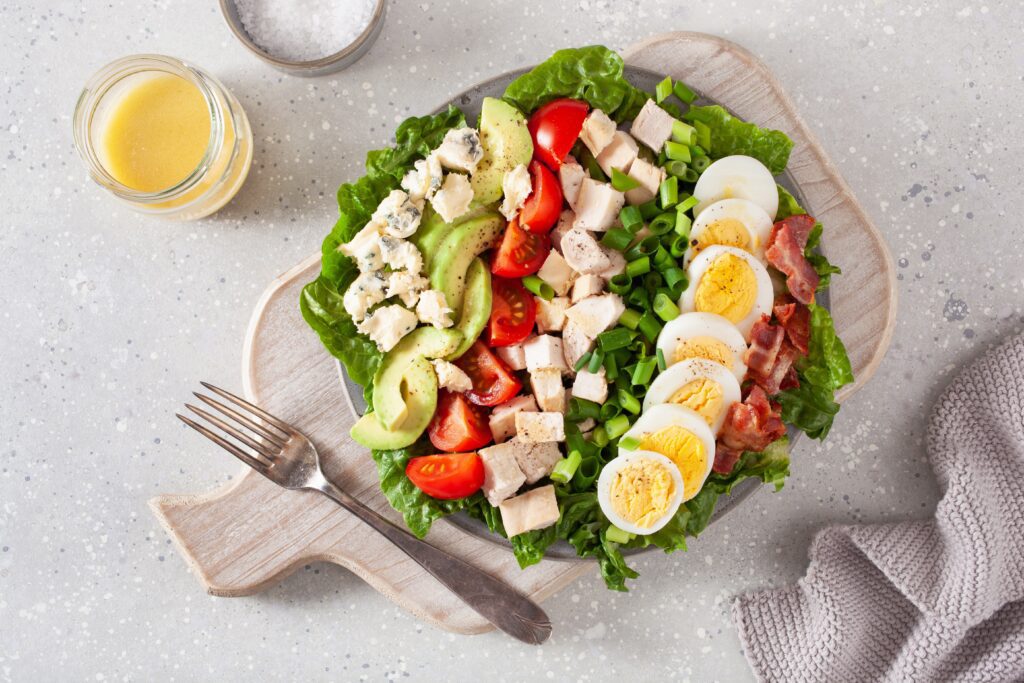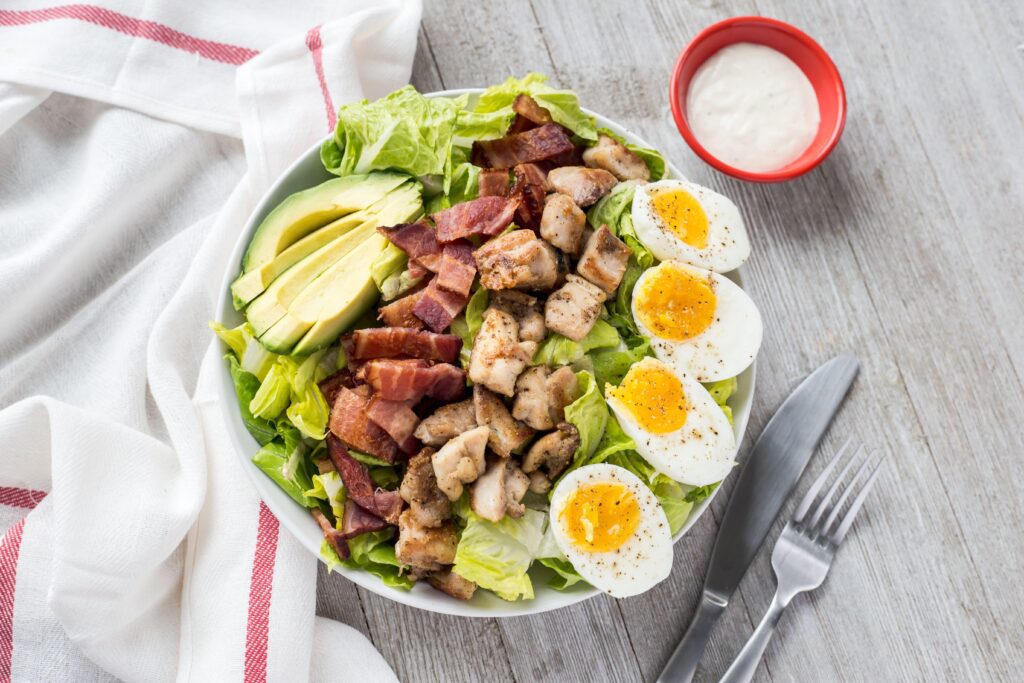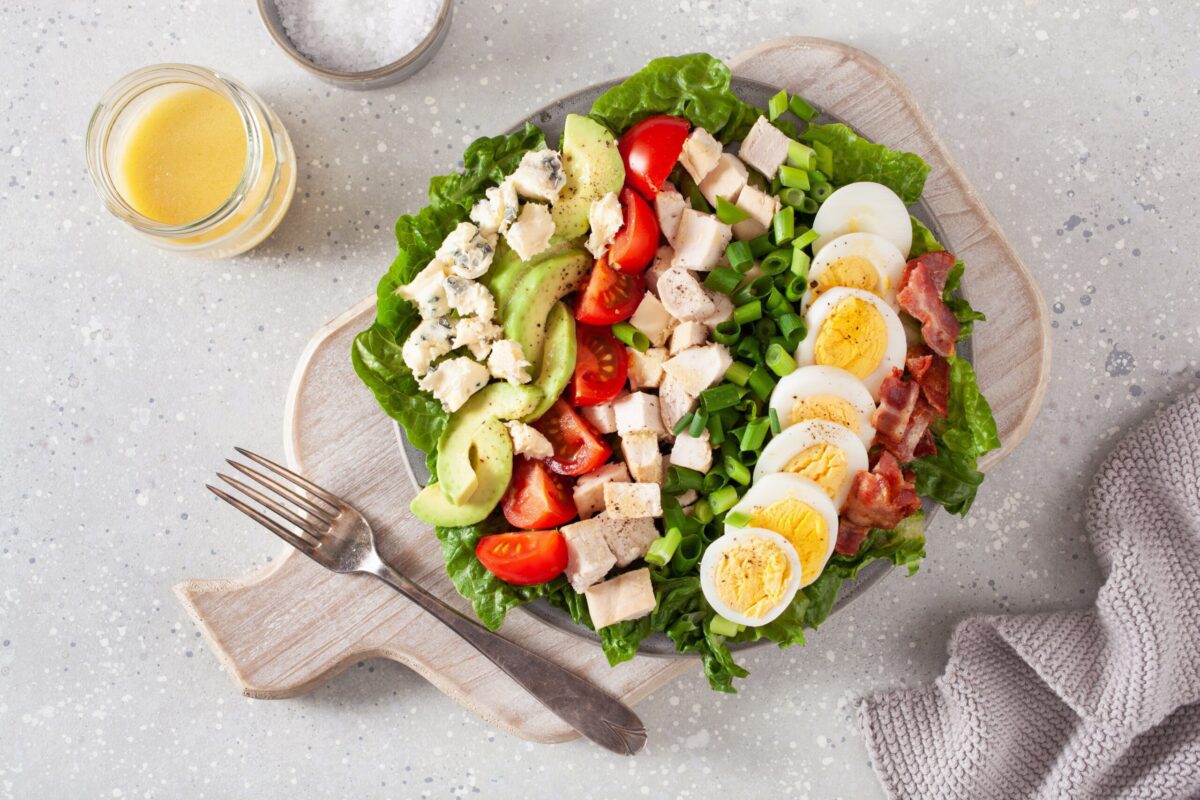The Cobb salad is a beloved staple of American cuisine, known for its blend of flavors and textures. With its mix of greens, proteins, and toppings, it seems like a healthy choice at first glance. However, many wonder why is a Cobb salad so high in calories? Surprisingly, its calorie count often rivals that of less nutritious meals, leaving health-conscious diners questioning their choice. What makes this seemingly innocent dish a high-calorie Cobb salad and how do its ingredients contribute to its calorie-dense profile?
This article explores the history of the Cobb salad, analyzes its ingredients, and uncovers the key factors driving its high caloric value. We’ll also provide actionable tips and healthier alternatives to enjoy this classic dish guilt-free.

The Origins of the Cobb Salad
The Cobb salad was first created in 1937 at the Hollywood Brown Derby restaurant by its owner, Robert Cobb. Legend has it that Cobb scavenged through his restaurant’s kitchen late one night to create a meal for himself. Using available ingredients, he assembled a salad that included:
- Salad greens (iceberg lettuce, watercress, and romaine)
- Hard-boiled eggs
- Chicken breast
- Avocado
- Bacon
- Blue cheese
- Tomatoes
- A French vinaigrette dressing
This improvised creation quickly gained popularity among Hollywood elites and became a signature dish at the Brown Derby.
Evolution Over Time
While the original Cobb salad was a balanced combination of ingredients, its evolution over decades has added richer and higher-calorie components, such as creamy dressings and larger portions of cheese, avocado, and bacon. These additions transformed the salad into a calorie-heavy meal. For more insights into other classic dishes, explore chicken Alfredo pasta casserole.
Ingredient Analysis: The Caloric Culprits in a Cobb Salad
To understand why the Cobb salad is so calorie-dense, let’s break down its key components.
1. The Greens
- Iceberg Lettuce: Low in calories but low in nutrients.
- Romaine and Watercress: Slightly more nutritious but negligible in calories.
While the greens form the base of the salad, they contribute minimally to the calorie count.
2. Proteins
- Chicken Breast: A lean protein source but calorie-dense when served in large portions (140 calories per 4 ounces).
- Hard-Boiled Eggs: Rich in protein and healthy fats but contribute 70 calories each.
- Bacon: A significant contributor to calories and saturated fat, with 42 calories per strip.
3. Healthy Fats
- Avocado: Packed with heart-healthy monounsaturated fats but calorie-dense (240 calories per avocado).
- Blue Cheese: Adds flavor and texture but is high in fat and calories (100 calories per ounce).
4. Dressings
One of the biggest calorie contributors in a Cobb salad is the dressing. Creamy dressings like ranch or blue cheese add 200–400 calories per serving. Learn more about how creamy sauces affect calorie counts in dishes like what makes Alfredo unhealthy.
The Role of Portion Sizes in Caloric Load
Portion sizes can make or break a salad’s calorie profile. While a homemade Cobb salad can be portioned to fit within a reasonable calorie range, restaurant versions often feature oversized portions. A typical restaurant Cobb salad includes:
- 6–8 ounces of chicken
- 3–4 strips of bacon
- A quarter to a half of an avocado
- Multiple tablespoons of dressing
This results in a meal that can easily exceed 1,000 calories.
Tips for Managing Portion Sizes:
- At restaurants, request a half portion or ask for dressing on the side.
- Share your salad with a friend.
- When preparing at home, use a food scale to measure portions. For more tips on managing portions, see which pasta is healthy.

Hidden Calories in Dressings and Toppings
Dressings and toppings are often overlooked but can contribute a significant portion of a salad’s calories.
Dressings:
- Creamy Dressings (Ranch, Blue Cheese): Rich in fats and high in calories.
- Vinaigrettes: While lighter, they can still add calories if used excessively.
- Tips: Opt for low-fat dressings or try making your own with olive oil, vinegar, and lemon juice.
Toppings:
- Cheese: Blue cheese is calorie-dense but can be replaced with lower-fat options like feta.
- Bacon: Swap traditional bacon with turkey bacon or use crumbled alternatives.
- Croutons and Nuts: While these add crunch, they can also add unnecessary calories. Use sparingly or replace with seeds for added nutrition.
Balancing Nutrition and Flavor
The beauty of the Cobb salad lies in its flexibility. You can modify it to suit your dietary needs without sacrificing flavor.
Healthier Alternatives and Modifications:
- Dressings:
- Replace creamy dressings with lighter vinaigrettes.
- Use Greek yogurt-based dressings for a creamy yet lower-calorie option.
- Proteins:
- Opt for grilled or poached chicken instead of fried.
- Use egg whites instead of whole eggs to reduce fat.
- Healthy Fats:
- Limit avocado to a quarter per serving.
- Substitute blue cheese with a lighter option like goat cheese.
- Greens:
- Use nutrient-dense greens like kale, spinach, or arugula.
- Portion Control:
- Reduce bacon and cheese to a garnish rather than a primary ingredient.
Incorporating Cobb Salad Into a Balanced Diet
Despite its calorie count, the Cobb salad can be part of a healthy diet with a few adjustments.
Tips for Balancing:
- Pair your salad with a high-fiber side like whole-grain bread or a piece of fruit.
- Prioritize vegetables and lean proteins over high-calorie toppings.
- Enjoy as a main meal rather than a side dish to avoid overloading your plate.
Frequently Asked Questions (FAQs)
Is a Cobb salad healthy?
Yes, it can be, provided you manage portion sizes and choose lighter ingredients.
Can I lose weight while eating Cobb salad?
Absolutely. Focus on portion control and ingredient substitutions to keep calories in check.
What’s the best way to reduce calories in a Cobb salad?
- Use vinaigrettes instead of creamy dressings.
- Limit high-calorie toppings like cheese and bacon.
Are restaurant Cobb salads unhealthy?
Restaurant versions are often high in calories due to large portions and rich dressings. Homemade versions give you better control over the ingredients.
Conclusion
The Cobb salad is a flavorful and satisfying dish, but its high calorie count comes from a combination of rich ingredients, large portions, and calorie-dense dressings. By understanding its components and making smart substitutions, you can enjoy this classic salad without guilt.
For more tips on balancing flavor and nutrition, check out which is healthier: Carbonara or Alfredo sauce?. Empower yourself with the knowledge to make healthier choices and savor the Cobb salad as part of a well-rounded diet!


6 thoughts on “Why is a Cobb Salad So High in Calories? Unveiling the Mystery”